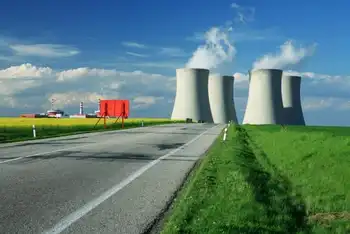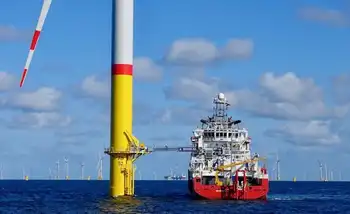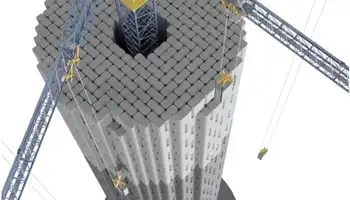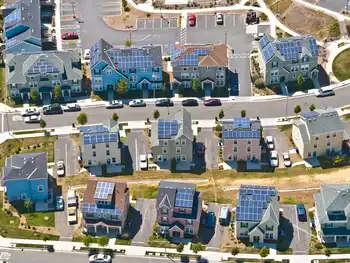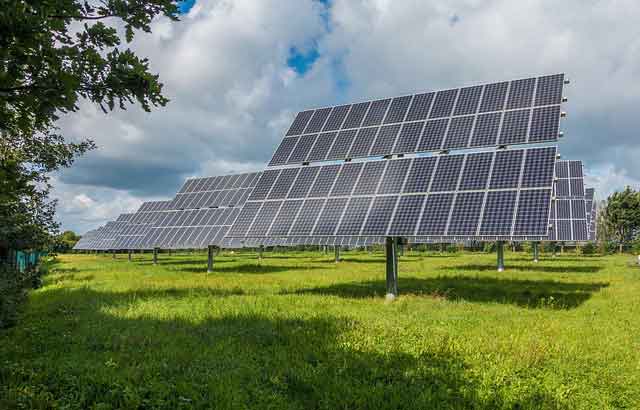Wind energy gains still lost in grid lock
By Reuters
Protective Relay Training - Basic
Our customized live online or in‑person group training can be delivered to your staff at your location.

- Live Online
- 12 hours Instructor-led
- Group Training Available
Billions have been spent installing wind farms across Europe over the last decade in an effort to reduce energy sector emissions of climate-warming carbon, with Denmark and Spain already producing over half of their power at times from it.
Much slower progress has been made on building the infrastructure needed to share the green power around because there is no incentive for grid operators run by power generators to open doors to competitors.
"There are a lot of business cases out there for more links but because of these historically determined structural deficiencies it's very difficult to convince the other side that it's a good idea," European Wind Energy Association Chief Executive Christian Kjaer said.
"If you have a vertically integrated power company you are not making decisions on building an interconnector based on whether that makes economic sense... I blame the politicians for not treating transmission systems for what they are, which is natural monopolies."
France and Germany in particular have frustrated European Union attempts to break up national energy champions, but faced with new, as yet unenforced European Union law, regional monopolies in Germany have started selling their grid arms which should spur investment.
But independent Spanish electricity network operator Red Electrica has been pushing for over a decade to lay more lines across the Pyrenees to France as its home market bloats with wind.
French grid operator RTE — still held by state-controlled generator EDF — has shown less enthusiasm for cooperation. The Iberian Peninsula remains isolated, causing REE regular headaches handling output from Europe's second-biggest collection of wind turbines.
"The bottleneck is the French network but it's really about being connected to the whole European system," REE President Luis Atienza told Reuters.
"The bigger the system the more stable it is and the greater the capacity to compensate for the variability of any of its component parts."
Madrid says it will need to double its wind capacity by 2020 to meet EU renewables targets and has made more energy interconnections a priority for its stint as EU president.
REE and RTE are finally set to start work on the first new grid connection in decades next year — backed by 225 million euros in new EU funds.
But it will only increase border capacity to 5-6 percent of Spain's peak demand when it opens in 2014 — nowhere near enough to deal with today's huge swings in wind power.
On windy days, Spain already has more power than it needs but can only transmit 2 percent of average output to France, so REE often has to tell operators to switch off gas, coal and wind power plants to avoid system overload.
Spanish fossil fuel power producers also suffer from gluts of subsidized wind power which force wholesale prices down to zero for hours at a time.
Green energy that could be sent to other parts of Europe with less wind power is wasted, while gas-fired plants run for less time and are less profitable when they do.
"If they want a single European market, then let me export my power to Europe," Pedro Rivero, president of power producers' group UNESA, said in an interview.
While Spain groans under the strain of its own green energy successes, Denmark is able to manage a bigger wind share in its mix because it is well connected with its Nordic neighbors — with the independent grid operators on both sides keen to make money from building new links.
"You have a huge interconnector to Norway where you basically have a big natural battery that can store wind energy from the hydropower plants and they have connections to Sweden as well," Kjaer said.
"This is how the Danes manage a system that occasionally would produce more than 100 percent of the demand from wind energy in west Denmark at times."
Building more high voltage lines between countries will help make better use of existing wind power in Europe, where some countries that have raced ahead can share the spoils with their less advanced neighbors.
But more links alone will not solve the problem posed by large high-pressure zones slashing wind output across Europe once other countries with big wind expansion plans catch up.
"We are not yet convinced that increased interconnection will solve all of these problems, particularly as the growth of wind is so widespread across European markets," Poyry Energy Consulting's Richard Slark said.
"Then you are into issues of how much could you rely on Norwegian hydro to help out across the European market.... A bit of everything will be required to manage this."






